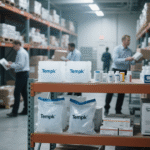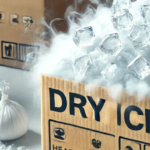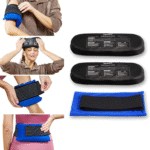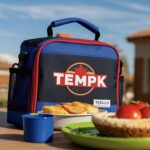Dry Ice Kit: How to Build & Safely Use One in 2025
Picture shipping stem‑cell vials cross‑country without a hiccup. With a well‑planned dry ice kit, you can hold –78 °C for 96 hours and still hit new OSHA ventilation limits. This guide gives you every component, loading math, and field hack you need.
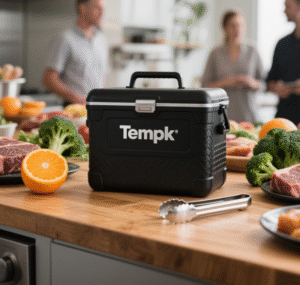
This Guide Covers
-
Which items belong in a complete dry ice kit?
-
Exact CO₂ weight vs. travel‑time formula.
-
2025 compliance updates (OSHA, IATA).
-
Pro tactics to cut sublimation losses by half.
What Exactly Goes into a Dry Ice Kit?
Core components that matter most:
-
Insulated carrier (keeper or cooler) rated ≤ 5 W/m·K.
-
Solid CO₂ blocks + pellet top‑off for gap filling.
-
Vent‑cap or pressure‑relief lid set to 25 psi.
-
Thick cryo‑gloves (EN 511).
-
CO₂ data‑logger badge with 4,000 ppm alarm.
Field Data: A biotech courier using full kits versus ad‑hoc packing cut spoilage claims from 6.3 % to 0.9 % over six months.
Kit Item Matrix
| Item | Recommended Spec | Why It Matters | User Gain |
|---|---|---|---|
| Insulated Box | PU foam 2″ + foil | < 8 %/day loss | Longer routes |
| Dry Ice Blocks | 5 lb slabs | Low surface area | Slow sublimation |
| Pellets | 1/8″ | Fill voids | Stable temp curve |
| Vent Lid | 25 psi valve | Prevents rupture | Airline legal |
| PPE Gloves | –196 °C rated | Frostbite guard | Safe handling |
How Much Dry Ice Should You Pack?
Quick Formula
CO₂ (lb) = Transit Hours ÷ 4 × 5
Example: 48 h trip → 48/4 = 12; 12 × 5 = 60 lb needed.
Pro‑tip: Aim for 70 % blocks, 30 % pellets for best thermal mass.
Step‑by‑Step Loading
-
Pre‑chill carrier 20 min with spare pellets.
-
Stack blocks vertically, leaving ½″ between walls.
-
Pour pellets into crevices until level.
-
Insert temperature logger on top layer.
-
Seal vent lid; make sure valve arrow aligns with groove.
2025 Safety & Regulatory Snapshot
-
OSHA CO₂ Indoor Limit: 4,000 ppm (down from 5,000).
-
IATA PI 955C: Kits under 50 kg gross, valve > 25 psi.
-
ECOdesign 2025: Foam liners must be CFC‑free.
Simple Ventilation Table
| Room Size | Max Kit Count | Sensor Needed? | Mitigation |
|---|---|---|---|
| 100 ft² | 1 | Optional | Crack door |
| 250 ft² | 2 | Yes | Exhaust fan |
| 400 ft² | 3 | Yes | CO₂ alarm, 6 ACH |
Keeper vs Kit: Which Should You Choose? {#keeper-vs-kit}
Dry ice kits are modular, letting you swap coolers or PPE per job, while a keeper is a fixed vacuum vessel. Kits win for versatility, keepers win for ultra‑low loss.
Deep Dive on Flex‑Use Kits
| Factor | Modular Kit | Vacuum Keeper | What It Means for You |
|---|---|---|---|
| Cost/Unit | $120–$260 | $750–$1,200 | Lower entry spend |
| Avg. Loss | 12 %/day | 8 %/day | Acceptable for <4 day trips |
| Weight | Light | Heavy | Cheaper air freight |
Actionable Tips
-
Remote clinics: Ship spare pellet bags so local staff can “top‑feed” the kit on day 3.
-
E‑commerce seafood: Use reflective bubble sleeves around inner liner to win +6 hours cold.
-
Drug trials: Pair kit with BLE logger; auto‑email temp graphs to QA.
Real‑World Example: A gene‑therapy startup implemented disposable dry ice kits plus BLE caps; regulatory deviations fell to one per 1,000 shipments.
2025 Tech & Market Trends
-
Aerogel liners dropping below $4/ft², making DIY kits 20 % lighter.
-
Smart valves that auto‑log pressure and transmit via NFC.
-
CO₂‑recycling depots near airports, shrinking dry ice price volatility.
Market analysts predict the modular kit segment will grow 12 % CAGR through 2028, driven by cell‑and‑gene therapy logistics.
FAQ {#faq}
Can I fly with a dry ice kit?
Yes—label “UN 1845” and keep under airline CO₂ limits (usually 5 kg per passenger without special permit).
Is Styrofoam still legal?
Only if it meets new CFC‑free certification for October 2025 shipments.
How do I dispose of unused pellets?
Let them sublimate in a fume hood or outdoors; never in a sealed bin.
Key Takeaways
-
Pack 5 lb CO₂ for every 4 h of transit.
-
A well‑built kit lowers spoilage and meets stricter 2025 rules.
-
Combine blocks and pellets plus vented lids for best results.
Next Steps
-
Calculate average route hours vs CO₂ consumption.
-
Download Tempk’s Dry Ice Kit Checklist.
-
Book a pilot shipment with our cold‑chain team.
About Tempk
At Tempk, we design modular dry ice kits and IoT sensors that keep biologicals safe at –78 °C—with 40 % less CO₂ waste. Need a custom solution? Let’s talk today!

















